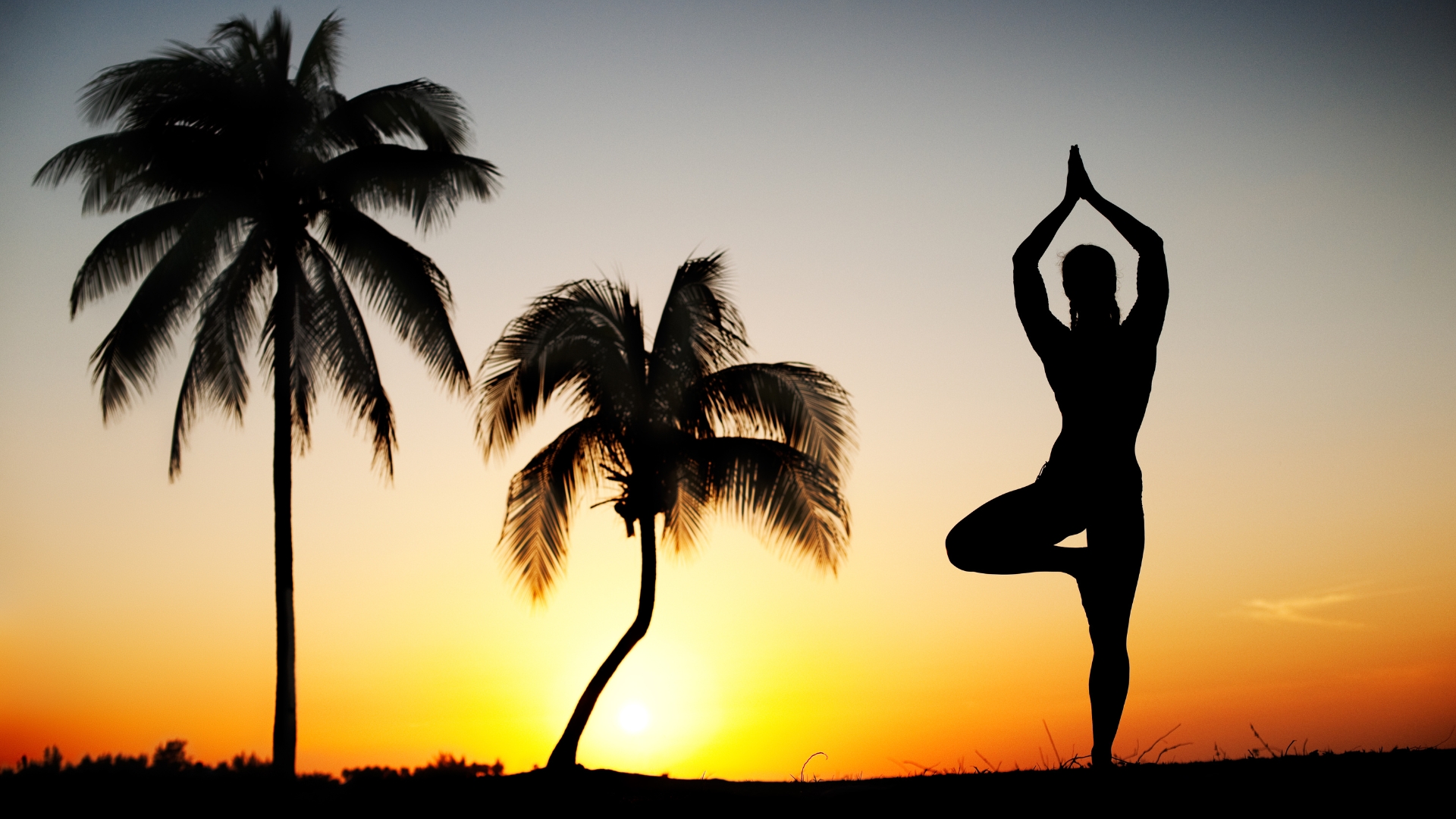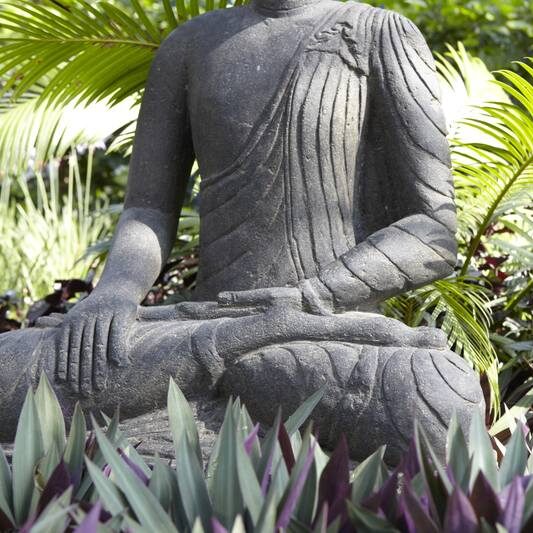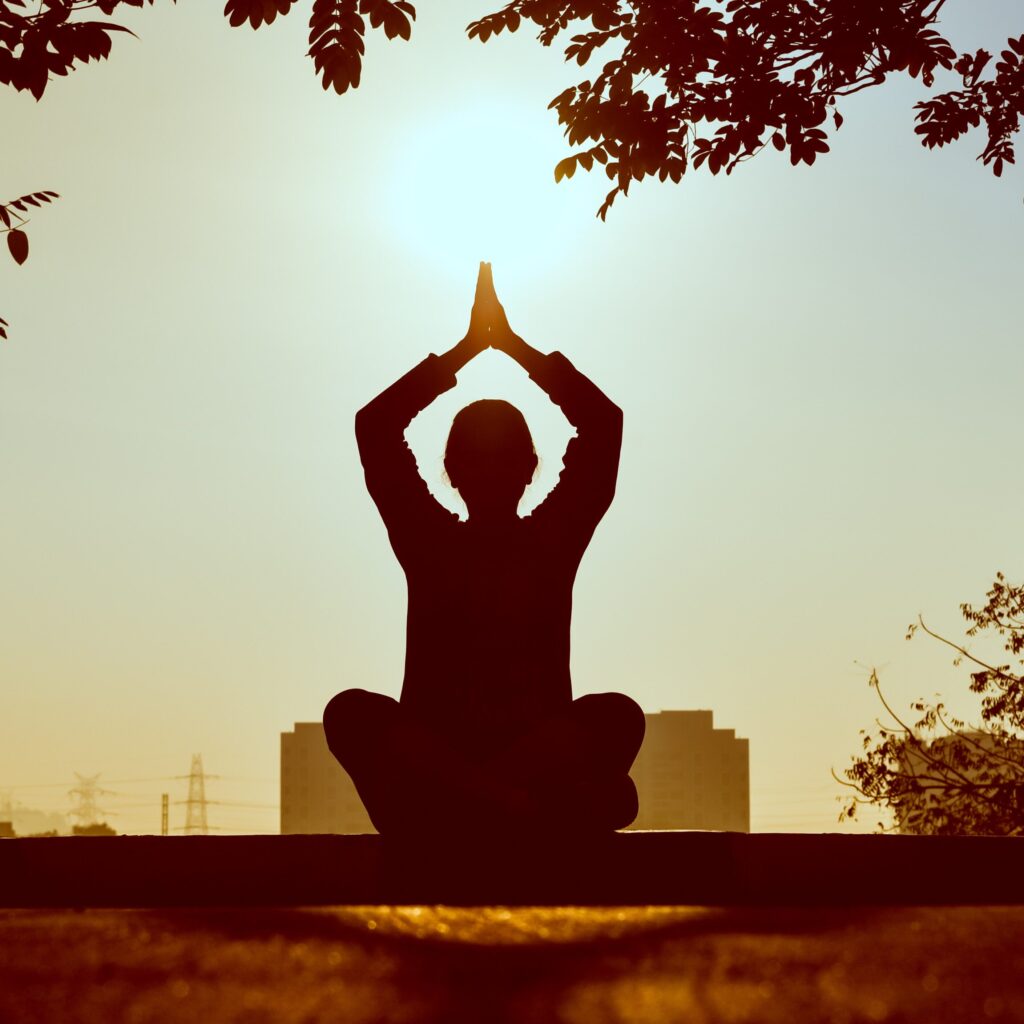Yoga meets a person where they are in life. Therefore, everyone finds themselves entering the practice of yoga in their own unique way. One may find themselves first drawn to meditation, philosophy, asana practice, or even dietary guidelines through Ayurveda.
It is also highly likely that yoga may find a person. This beautiful practice is sure to open up infinite doors of exploration and self-understanding.
Finding the true meaning of yoga is definitely a personal journey for each practitioner. Yoga is a personal practice, and each yogi is their own greatest teacher in this practice and in life. The secret is that a person can never be a “master” of yoga. This is a lifelong practice, and it takes humility, discipline, and patience to continue coming back to that practice every day.
One great way to cultivate that discipline is to join a yoga teacher training immersion. By taking away distractions of everyday life and fully immersing oneself in an environment created for the study and practice of yoga, it becomes much easier to cultivate the necessary discipline to delve deeper into yoga.
Blue Osa is the perfect place to do just that. With 3 delicious and healthy farm-to-table meals prepared daily for every trainee, and all other accommodations that one may need as well, a person can truly put their all into their studies and get the most out of the training experience.
Patanjali’s 8 Limbs of Yoga
When striving to understand the true meaning of yoga, one of the most important places to start is to study Pantanjali’s 8 Limbs of Yoga.
In the Yoga Sutra, Patanjali lays out the eightfold path for following the practice of yoga. This is known as “Ashtanga” which literally translates to “Eight Limbs”. The 8 limbs provide guidelines for how to maintain one’s health, connect with spirituality, and overall reduce suffering.
So, what exactly are the 8 Limbs of Yoga?
Ashtanga Yoga includes :
YAMA – Restraints, moral disciplines or moral vows
NIYAMA – Positive duties or observances
ASANA – Posture
PRANAYAMA – Breathing Techniques
PRATYAHARA – Sense withdrawal
DHARANA – Focused Concentration
DHYANA – Meditative Absorption
SAMADHI – Bliss or Enlightenment
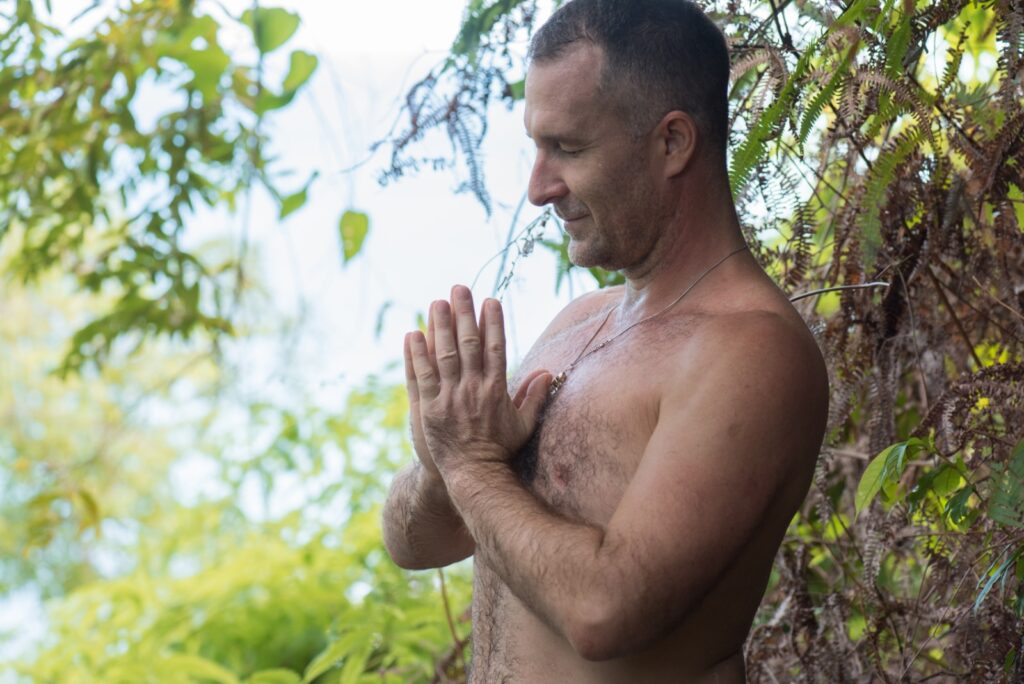
A good mnemonic device to help remember the 8 limbs is “You Never Are Perfectly Practicing Down Dog Silly”.
To practice yoga is to strive to understand and incorporate each of these concepts into everyday life, not just in a yoga class or on a yoga mat.
Yoga is the essence of life. The experience of pain is inevitable, but suffering is optional. Yoga teaches the practitioner how to deal with inevitable pain and reduce suffering. Following Patanjali’s Ashtanga yoga is the path that can take each person to that goal.
Now, let’s dive a little bit deeper into the meanings behind these concepts.
Yama
There are five parts to the first limb, Yama. The Yamas are moral and ethical vows which provide guidance on the way in which one should carry themselves throughout life in relationship to the world around them.
The five Yamas include:
Ahimsa: nonviolence
Satya: truthfulness
Asteya: nonstealing
Brahmacharya: continence
Aparigraha: non-covetousness
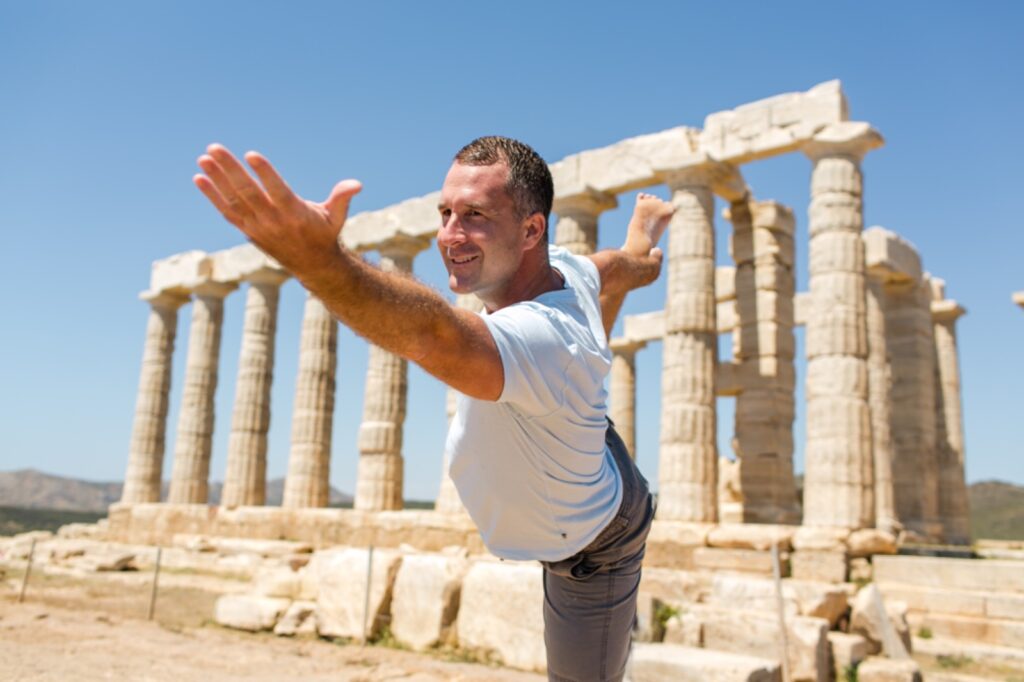
Niyama
There are also five parts to the Niyamas. These principles provide guidance for self-discipline and spiritual discipline.
The five Niyamas include:
Saucha: cleanliness
Samtosa: contentment
Tapas: burning impurities
Svadhyaya: study of the sacred scriptures and of one’s self
Isvara pranidhana: surrender to God
Asana
The word asana refers to the physical postures practiced in yoga. The translation of asana is “to sit”. This is because the aim is to be able to sit in each pose, cultivating two specific qualities.
These qualities of the asana are referred to as sthira and sukha which means “stability and ease”. Therefore, no matter what pose one may be practicing, the aim is to intentionally cultivate both stability and ease and learn how to balance the two. When this is practiced while doing challenging yoga postures, it helps a person be able to more easily translate feelings of stability and ease into other parts of life as well.
Practicing asanas also keeps our physical body healthy and mobile. This allows for longevity of life, and longevity of one’s ability to be still for a meditation practice.
Pranayama
Pranayama refers to breath control, restraint, and techniques. Prana refers to the life force energy that animates all living beings. This is believed to be changeless and eternal. The breath is prana. Breath is the most important thing to focus on in yoga. If you have a body, and you can breathe, then you can do yoga! Practicing pranayama can start to show the truth of the connection between the mind, body, and breath.

Pratyahara
Pratyahara means withdrawal from the senses. Once discipline of practice, the stillness of the body and restraint of the breath is attained properly, then a person begins to really go within themselves in a new way. In order to do so, the external senses: touch, taste, smell, sight, and hearing, must be turned away from. When pratyahara is practiced, the practitioner tries to focus on letting all external sense perceptions fade away, becoming an observer of those things.
Dharana
Dharana refers to one-pointed focus; the ability to focus one’s attention on one object of choice, without disruption. Despite external sense perceptions or even internal thoughts and feelings that may serve as a distraction, the goal is to transcend and become the observer to all of that, choosing not to attach any attention towards those stimuli.
Dhyana
Dhyana is meditation, which is achieved with unwavering concentration. In a state of Dhyana, the distractions have seemingly faded away and complete present-moment awareness is attained.
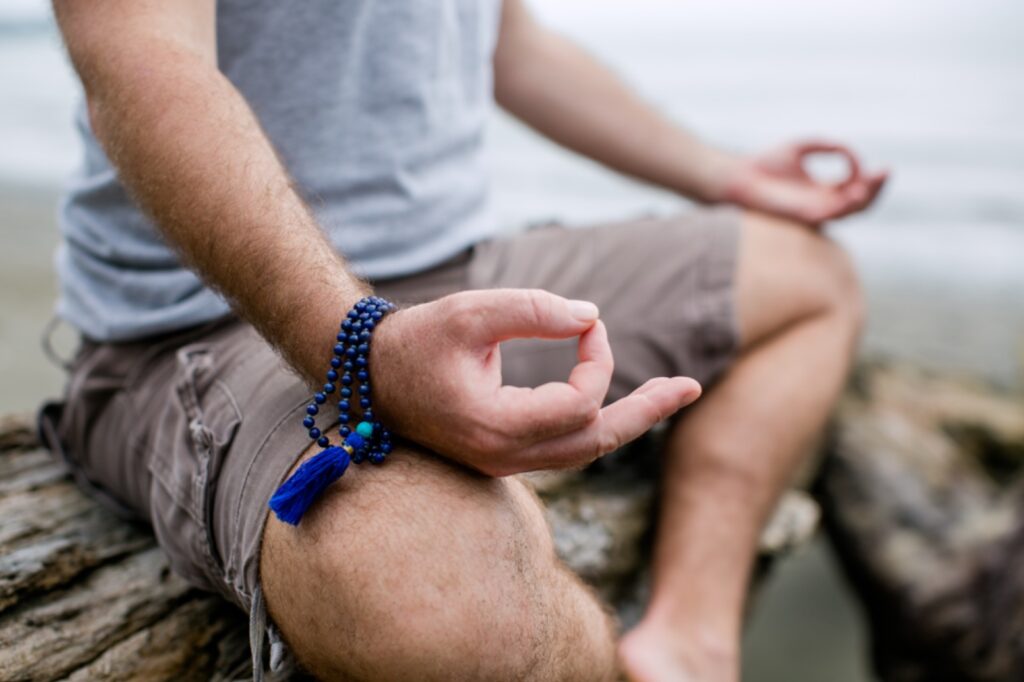
Samadhi
Samadhi translates to “same sight”. This is when the veil of avidya, or suffering, has been lifted, bringing about a new sense of clarity in viewing oneself and the world. The union of the self with the Self has finally been attained, even if only for a moment.
Union
The word yoga means union. Union of the mind, body, and breath. Union of the ego self with the true self . . . union of the self with the world . . . union of the self with others . . .
This can take on so many meanings. As mentioned previously, yoga meets a person where they are in life. Yoga may present itself in so many different ways depending on what is needed in a person’s life at that moment. Yoga is a mirror for which we can see ourselves more clearly, on all levels.
Once yoga presents itself in a person’s life, and then that person chooses to continue to follow the yogic path, soon they will find that doors become open for them. Doors of self-realization, unconditional love, contentment, and gratitude. What is the true meaning of yoga? Only you can truly answer that for yourself. Stay on this path, and all will come. Never stop studying, and never stop practicing!
“Life means to be living. Problems will always be there. When they arise navigate through them with yoga — don’t take a break.
B.K.S. Iyengar
Yoga is like music: the rhythm of the body, the melody of the mind, and the harmony of the soul create the symphony of life.”


